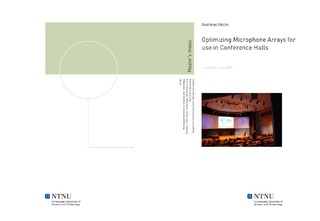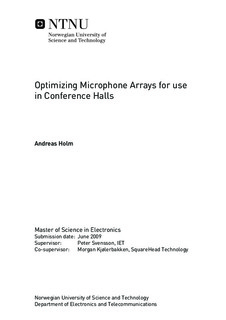| dc.description.abstract | In conference halls, the question and answer session is often impaired by poor solutions for listening to the audience on the public address system. By using microphone arrays to capture the sound from questions, everyone can hear what the discussion is all about. If a tracking is used as well, these arrays creates an automatic speaker and sound reproduction environment. Because of issues like feedback, delay, and frequency response, a feasibility study on the use of microphone arrays in conference halls has been done. By combining and applying known feedback techniques as well as newly developed methods, this study shows that a $10$ dB louder gain before feedback margin has been achieved and thereby making the automatic sound capture system work. Issues still remain, and many of the feedback techniques used can linearly distort the frequency response and reduce the sound quality. Latency in the processing time has been reduced in this thesis by 20 ms, and the total delay with 15 meters sound travel time and a loudspeaker array is measured to be 58.2 ms. However, according to the Haas effect, the total delay should be below 40 ms to avoid echoes.In this thesis, the best performing setup that gives the loudest maximum stable gain is achieved with a microphone array tilted above the second row to hit in the middle of the audience in an auditorium, loudspeaker arrays mounted high on the front wall programmed to play down towards the audience, a frequency-shifter of -5 Hz, a bandwidth from 500 to 6500 Hz, and a soft equalization along with an automatic tracker for locating the speaker. However, the sound quality difference between a close-up microphone and the microphone array is still present, and the lack of low and middle frequencies in the microphone array makes the microphone array sound a little narrow. | nb_NO |

